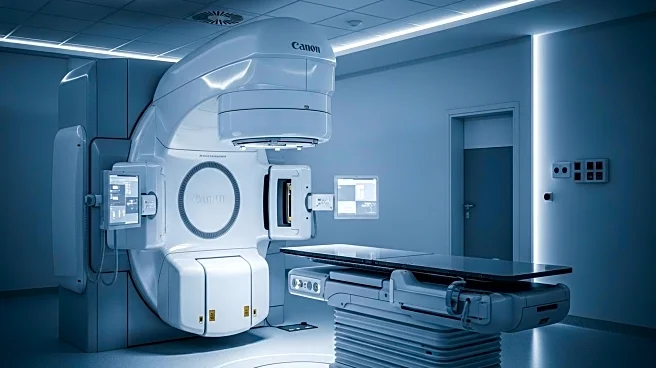What's Happening?
A study has developed an automated radiomics model to predict therapy response and minimal residual disease (MRD) in multiple myeloma patients using baseline MRI data. Conducted by the German Speaking Myeloma Multicenter Group, the research involved unenhanced whole-body MRIs and clinical data from the GMMG-HD7 trial. The study compared the predictive performance of models incorporating clinical features alone versus those enhanced with radiomics features. The findings revealed that models integrating radiomics data significantly outperformed purely clinical models in predicting therapy response and MRD status. The study utilized machine learning classification models trained on data from multiple imaging centers, highlighting the potential of radiomics in improving predictive accuracy in oncology.
Why It's Important?
The integration of radiomics into predictive models for therapy response in multiple myeloma represents a significant advancement in personalized medicine. By enhancing the accuracy of predictions, healthcare providers can tailor treatment plans more effectively, potentially improving patient outcomes. This approach could lead to more precise identification of patients likely to benefit from specific therapies, thereby optimizing resource allocation and reducing unnecessary treatments. The study underscores the importance of incorporating advanced imaging techniques into clinical decision-making processes, paving the way for more individualized and effective cancer care strategies.
What's Next?
Future research may focus on refining radiomics models to further enhance their predictive capabilities and explore their application in other types of cancer. The study's findings could prompt healthcare institutions to adopt radiomics-based approaches in routine clinical practice, potentially transforming oncology treatment paradigms. Additionally, collaboration between imaging centers and clinical researchers could lead to the development of standardized protocols for radiomics data acquisition and analysis, facilitating broader implementation of these models in clinical settings.
Beyond the Headlines
The use of radiomics in predicting therapy response raises ethical considerations regarding data privacy and the need for informed consent in the use of patient imaging data. As radiomics becomes more integrated into clinical practice, healthcare providers must address these concerns to ensure patient trust and compliance with regulatory standards. Furthermore, the study highlights the potential for radiomics to contribute to the development of more equitable healthcare solutions by providing insights into treatment efficacy across diverse patient populations.










